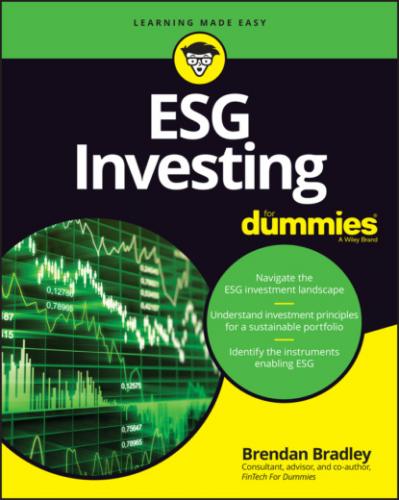Furthermore, not all weightings have the same importance to every industry (see Chapter 14 for more information). Some providers use levels of data disclosure as a proxy for the relative weight of materiality issues for each industry. This data highlights which sectors contribute most, and their proportion of the contribution to the total is used as a proxy for the level of materiality for that sector. For example, greater disclosure on carbon emissions data suggests that they are more material to companies in that sector. In addition, if given companies in a sector aren’t reporting relevant metrics, they may be arbitrarily assigned a score of zero to encourage disclosure and transparency.
Understanding Why ESG Is Important
If it wasn’t clear already, ESG and sustainability issues are counted as important long-term factors, and they are the focus for ever-increasing amounts of research to identify them as catalysts for long-term corporate and investment performance. This has encouraged advisors, consultants, investment platform providers, and ratings agencies to develop tools to identify asset managers with the ability to pinpoint those factors and companies and to highlight the advantages in this rapidly increasing market.
There have been major advances in the understanding of how ESG factors may impact performance. The growth in academic and other research is providing evidence to underpin that belief. For the world’s major asset owners and other stewards of capital, how a company classifies and oversees its operational and reputational risks as well as the economic and commercial opportunities from ESG issues is a fundamental gauge of the quality of its board of directors and the overall business. Investors are now seamlessly integrating an assessment of ESG quality with financial analysis to form a holistic view of an enterprise’s risk and the potential to deliver long-term earnings growth and therefore value. This section highlights some of the issues that are driving the need for ESG investing.
Global sustainability challenges
The year 2020 marked the start of the “decade of delivery” for the 17 Sustainable Development Goals (SDGs; see Chapter 1 for more information). In light of the impact of the COVID-19 pandemic, these words may have more resonance than they did previously for most people, and there is more awareness of the sustainable development issues that impact us all. Indeed, the international community could use the pandemic as a way to get back on track to achieve the SDGs and accelerate progress during this decade to deliver sustainable development. More recently, many countries have carried out Voluntary National Reviews (VNRs) of their implementation of the 2030 Agenda, and companies are reviewing their ESG agendas in tandem.
The interest of millennial investors in ESG
Millennials, those youngsters born between 1981 and 1996, are part of the generation entering their prime earning years. Numerous surveys have indicated that the vast majority of high net worth (HNW) millennials consider a company’s ESG track record before investing, or alternatively they want to tailor their investments to their personal values. This reflects a need for their money to not just earn a decent return but to contribute to the social good and how it impacts society and the planet at large.
Why is that important? Millennials are a large demographic, representing about 25 percent of the world’s population and a greater percentage of the workforce now and into the future. Moreover, this group is due to inherit a large amount of wealth as their parents, the baby boomers, pass on their considerable nest eggs. Furthermore, surveys have suggested that wealth management firms typically lose more than 70 percent of assets when they are transferred from one generation to the next. Subsequently, asset managers that offer millennials ESG investment options will be well positioned to attract new assets as well as retain beneficiary millennial clients.
More systematic, quantitative, objective, and financially relevant approaches
As the significance of the ESG market has grown, the financial industry has evolved the definitions of which ESG factors are relevant and how they can be applied to the performance of a company. Using this more informed data from companies, combined with enhanced ESG research and analytics capabilities, the industry is producing more systematic, quantitative, impartial, and financially applicable approaches to highlight the core ESG factors.
In turn, this has generated more research that advocates a better understanding of ESG investing and resultant data points to feed the new AI approaches to filter unstructured data through Natural Language Processing (NLP) and Machine Learning (ML) to drive predictive analytics (find more information on this later in this chapter). There are tens of thousands of company issuers and hundreds of thousands of equity and fixed-income securities — combined with an increasing array
